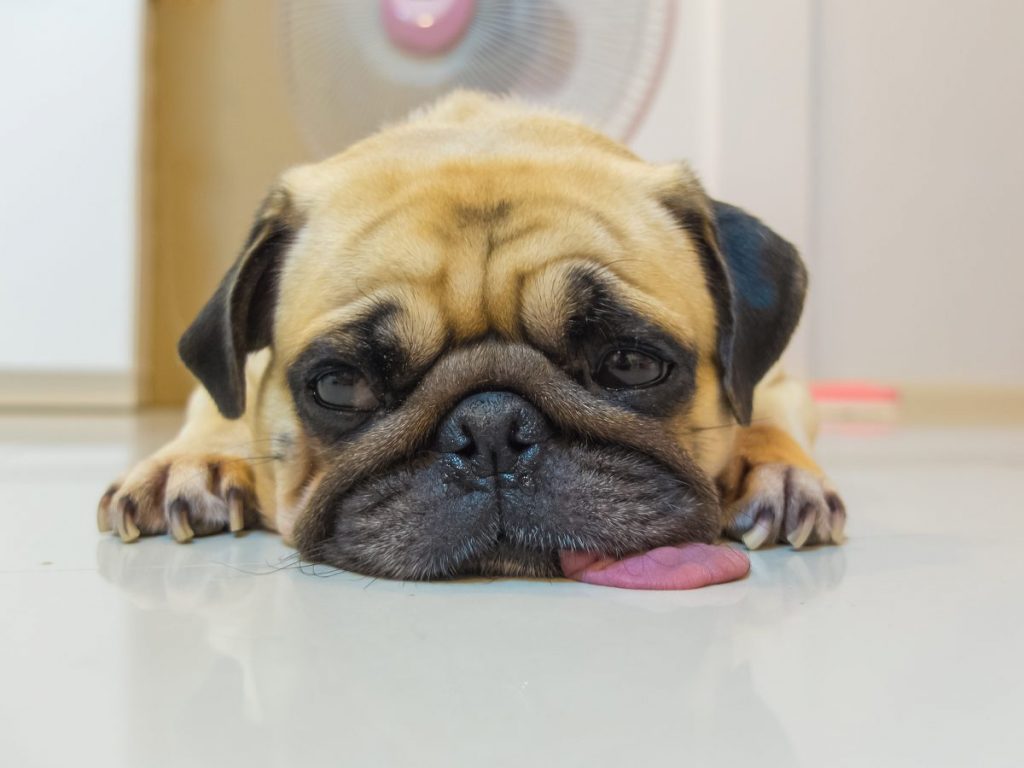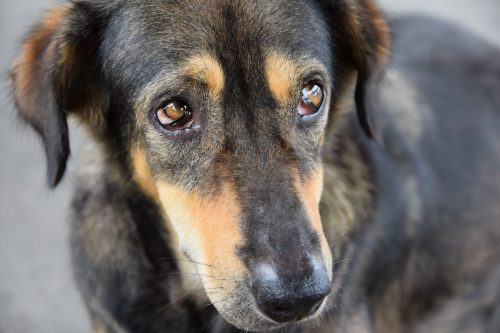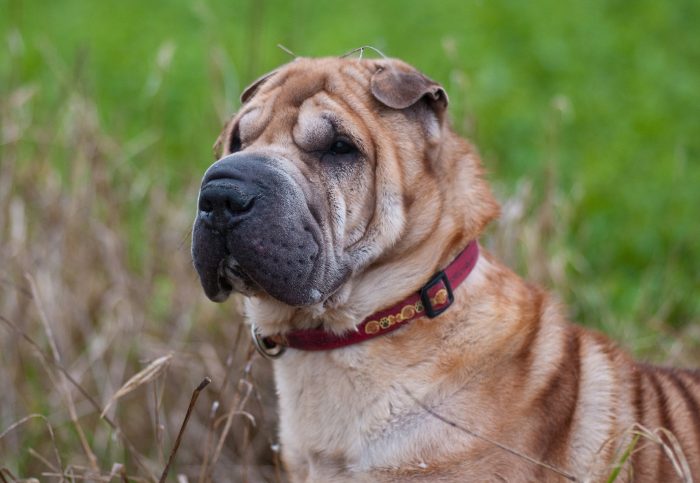Dogs have their good days and their bad days, just like with humans. If it seems like your dog is having more bad days than good – there may be a deeper issue at hand.
Dogs can experience a change in their mood just like humans do, but pets can also suffer from an ongoing slump that may indicate depression. There are many physical symptoms to look out for when diagnosing a dog with depression. If you are concerned that your dog is depressed because they seem sad and tired, your pet may be suffering from depression, read more to learn about the symptoms, causes, and treatment options available. Once you are able to properly diagnose your pet, you will be able to improve the quality of your dog’s life by helping them feel themselves again!
What does canine depression look like?
Depression in dogs is something that can be often overlooked. In many ways, canine depression is extremely similar to human depression. Although your dog can’t communicate with you and tell you exactly how they are feeling, there are many indicators that can reflect how they are feeling. These signs range from changes in activity levels, loss of appetite, among others.
Many of these symptoms, however, may also be caused by physical problems rather than the mental or emotional problems that depression suggests. Taking your dog for a quick check-up to the vet upon discovering these behavior changes might be a good idea in order to eliminate other possible causes.
What are the symptoms of depression in dogs?
 Change in Appetite
Change in Appetite
A dog’s appetite should be fairly consistent. Like humans, depression often comes hand in hand with either a loss of appetite (under eating), or a sudden increase in appetite (binge eating). While the severity of these conditions will vary from dog to dog, you will start to notice a significant change in weight. Weight change sometimes comes and goes as “water weight.” However, if this is a fluctuation that seems to be a reflection of their eating habits, you should get your dog to the vet as soon as possible.
Variation in Mood
Dogs have hormone fluctuations that can influence their mood just like humans. However, if your dog experiences a big (and consistently negative) change in their mood, then this will affect their overall activity level. Maybe you are used to seeing your dog wag his tail happily while running around the house, but now it never seems to happen anymore.
Instead, your dog spends his time hiding in the obscure corners of your home or under your bed, tail lying limp to his side. He doesn’t want to play tug-of-war anymore, he won’t run after the ball you throw down the lawn, and he doesn’t even want to play with his favorite toy. If it seems like you’ve tried everything that used to work, maybe it’s time to seek professional help.
Licking His Paws
Dogs who are going through psychological pains will sometimes lick their paws in order to comfort themselves. If your dog does not do this already, seeing him start may be a sign that he is feeling lonely. Although this can be hard to catch throughout the day, it is oftentimes a key indicator of the beginning stages of depression. Pay close attention to any shifts in your dog’s behavior. It’s small signs like this that can help dog owners understand their furry friend’s mental and emotional state at a greater level.
Subtle Sighs and Cries
Some signs of depression in dogs are more obvious than others. Try listening to your dog. It might sound like a weird thing to do at first, but dogs can let out sighs, cries, or sometimes whimpers that can indicate loneliness or sadness. These small signals could mean different things in different contexts. For example, one-off yelps could indicate physical temporary pain rather than something as serious as ongoing dog depression.
For this reason, it is important that you pay attention to the frequency of these sighs and cries. Just like the licking of the paws, these sighs, cries and whimpers may be difficult to notice if you aren’t with your dog all day. They are still helpful hints that may indicate that your dog is emotionally or psychologically in trouble.
What are possible causes of your dog’s depression?
Loss of Companion and/or Owner
Over the years, your dog creates strong bonds with both you and any other animals that you may have brought into your home. Naturally, a loss in the family could mean that your dog may undergo a period of grieving much like humans do. During this time they may be feeling separation anxiety which can lead to depression. This is something that can psychologically hurt the dog, and time is the only way for them to heal.
Feeding Off of Owner’s Depression
Throughout the years, you and your dog have formed a special relationship. Therefore, if you become sad or depressed, it’s likely that your dog will pick up on these feelings and mirror your new state of mind. Remember that a dog will notice changes in your behavior, and will act accordingly if they feel it is necessary. By showing your dog love and support, they will be more likely to mimic that behavior and adopt a more positive state of mind.
Moving to a New Home
Surroundings for a dog, as they are for many other animals, are extremely important when it comes to their overall mental health. Your dog may have become comfortable in his previous home, having created many positive memories.
Much like people, dogs resist change and may become depressed after involuntarily moving to a new home. This is a natural effect for most dogs who move from one house to another, so pay close attention to your dog’s mood and behavior if you plan on relocating to an entirely new home. Your dog may go into a depressive state if he is in an unfamiliar space.
Homesickness or Loss of Familiarity
Your dog may also become homesick if removed from your home for an extended period of time. If you decide to go on vacation and bring your dog, unfamiliar surroundings could drastically influence his behavior and alter his mood. The longer you are away from your home, the more homesick and depressed your dog may become.
Like moving to a new home, your dog’s sense of smell may be slightly off, which may cause him to feel uncomfortable or cause anxiety. Likewise, leaving your dog at a doggy daycare or with a dog-sitter works well for some dogs, but not for all of them. Be conscious and receptive to these factors, and understand that these changes can cause confusion for your pet.
A New Pet
While the introduction of a new pet to the household is normally received as an exciting new addition to the family, your dog may not feel the same way. Whether it is a new dog, cat, bird, or fish, a new pet will take some of your attention and time away from your current pet.
Before your dog gets used to having his new friend around, he may be uncomfortable with the addition and view your new pet as competition, fighting for your love. If the amount of care and attention you give them changes, your dog may feel underappreciated and unwanted, causing them to feel depressed.
Drastic Changes to Your Dog’s Schedule
Something as minor as a change in schedule can also cause your dog to feel depressed. For example, altering normal waking hours or putting stress on your pet for any reason can cause a change in their overall mood. This unfamiliar schedule can wreak havoc on your dog’s emotions, evoking feelings of loss or anxiety, and can even put them in a state of depression. If you notice your dog is depressed, it could be due to a change in your routine.
If you must switch up your routine, make the transition as smooth as possible by introducing schedule changes slowly. Rather than changing his meal time, nap time, and play times all in one day, try introducing them one at a time. This will ensure that your furry friend does not become overwhelmed with new information – ultimately helping them adapt as well as continuing to nurture a healthy state of mind.
How to treat dog depression?
Watching your canine companion suffer from depression is heartbreaking. You may be wondering, what should I do for my depressed dog?Fortunately, there are numerous things that you, as the owner, to cheer up a depressed dog and get that tail wagging again in no time at all! By following a few simple steps, you will be able to help your dog start feeling himself again.
Spend More Quality Time with Your Dog
Spending more time playing with your dog can easily do the trick. However, with work, school, kids, and a hectic schedule, people often forget to spend some quality time with their dogs. Remember to put some time aside every day to do things with your dog that will make him feel loved and appreciated. Daily walks and plenty of playtime in your dog’s life are both great ways to show your pet that you appreciate them.
Reward Good Behavior Only!
It may sound harsh, but giving your dog treats while they are going through depression might not be the best idea. While treats may be a good source of instant gratification, they will not help in the long run. In fact, the treats could reinforce the idea that this negative behavior or attitude is something to be praised and applauded.
So while your dog may be looking at you with sad eyes, resist the temptation to give them a treat to try and cheer them up. Instead, reward good behavior! If your dog agrees to play a game with you, give him a treat. Did he come to greet you at the door? Give him another treat. Use treats as a positive incentive to reward good behavior in your dog.
If you think your dog may be suffering from depression, take him to the veterinarian as soon as possible. By identifying the underlying symptoms, you will be able to get your dog feeling like normal, happy self in no time!






